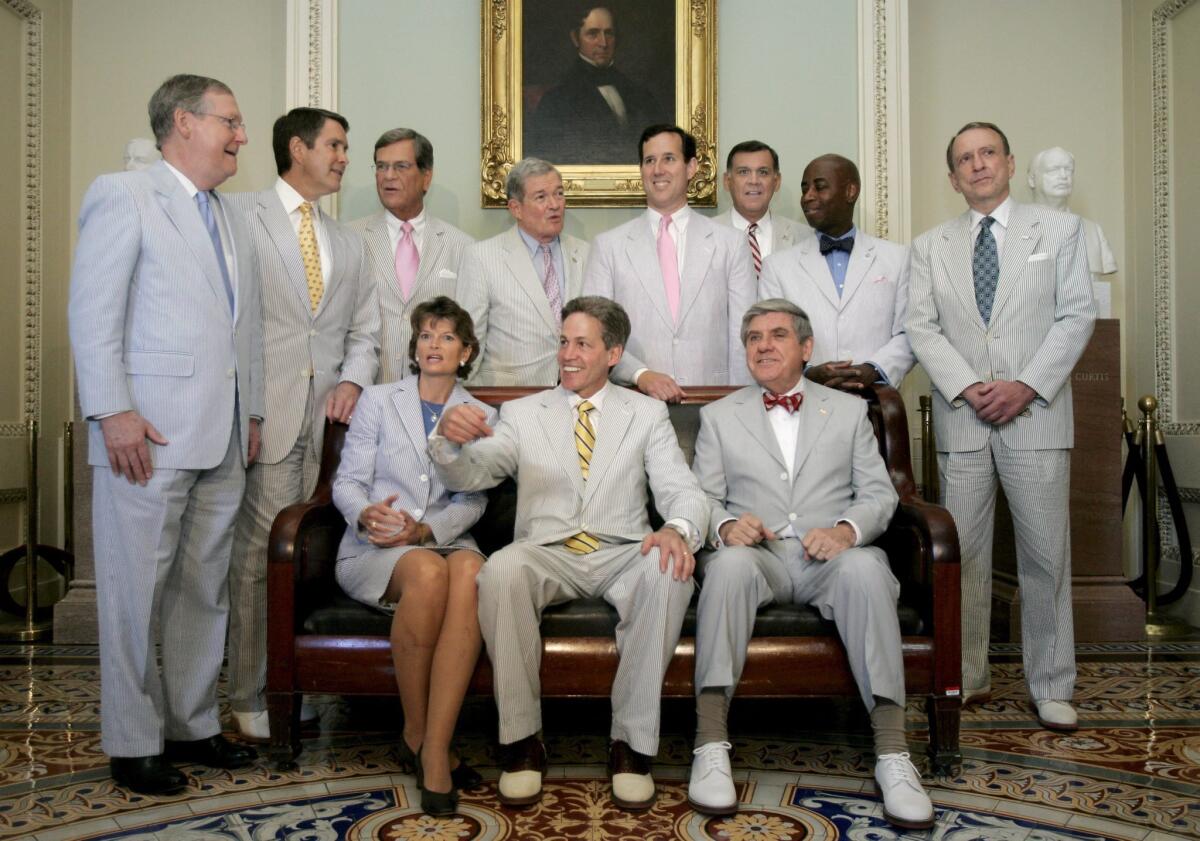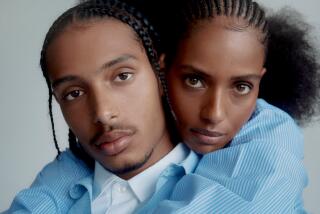Yipes, stripes! It’s National Seersucker Day

- Share via
Seersucker isn’t just having a moment -- it’s having an entire day.
For that the puckered fabric can thank Rep. Bill Cassidy (R-Louisiana), who last month filed a proclamation with the House of Representatives that read, in part:
“In celebration and appreciation of seersucker manufacturers and admirers around the country, I extend a Happy Seersucker Day. With a rich history dating back to 1909, seersucker clothing is a unique American fashion. The original seersucker suit was designed by Joseph Haspel at his Broad Street facility in New Orleans and has been enjoyed since by many Americans. The lightweight cotton fabric with its signature ‘pucker’ has provided comfortable fashion ware during the hot summer months. As Mr. Haspel said, ‘hot is hot, no matter what you do for a living’, seersucker clothing is now enjoyed by Americans across the country in all walks of life. In the late 1990s, Seersucker Day was established to honor this unique American fashion. I wish to restart this tradition by designating Wednesday, June 11th as National Seersucker Day. I encourage everyone to wear seersucker to commemorate this iconic American clothing.”
We thought that would make today the perfect time to take another look at the textured fabric with the snicker-inducing name. (Anyone who has seen “Sophie’s Choice” isn’t likely to forget Meryl Streep’s memorable mangling of the word).
First of all, what exactly is seersucker? The Fairchild Dictionary of Fashion describes it as a “medium-weight fabric made with lengthwise crinkled stripes alternating with plain woven stripes.” It goes on to explain that the puckering is achieved by “releasing the tension at intervals on the lengthwise yarns.”
Merriam-Webster traces the etymology of the word ultimately back to the Persian shir-o-shakar (literally “milk and sugar”), which is a reference to the juxtaposition of a smooth texture (the milk) with a bumpy or grainy texture (that’d be the sugar).
And, while alternating stripes of blue and white are the most common permutation, the fabric has long been offered in other stripe combinations (green and white and red and white versions are two combinations we’ve seen fairly frequently). More recently, we’ve seen solid-color seersuckers (think “all of the pucker, none of the stripe”).
If you’re looking to celebrate by snapping into some not-so-serious seersucker, Brooks Brothers has some fun offerings, including a Kentucky Derby themed pair of seersucker trousers that adds all-over embroidery of mint juleps and derby hats ($128), and a seersucker jacket (in its Red Fleece collection) festooned with all-over embroidered flamingos ($248).
While Brooks Brothers has undoubtedly been doing seersucker for ages, it’s Haspel (name-checked in Lindsay’s proclamation) who lays claim to inventing the seersucker suit back in 1909. And that brand has recently been reinvigorated and relaunched by Laurie Haspel Aronson (great-granddaughter of founder Joseph Haspel Sr.) who tapped the Shipley & Halmos design team for the new collection that debuted for spring 2014.
Nordstrom’s website is carrying a range of Haspel’s wares including a red plaid seersucker sport shirt ($195) and trim-fitting blue and white seersucker blazer ($695).
But one of the most memorable takes on seersucker we’ve seen lately comes from Thom Browne -- not just in his namesake collection where it’s a summertime fabric of choice but also in his Black Fleece collaborative collection with Brooks Brothers where the spring and summer 2014 collection found seersucker layered under women’s floral tulle in skirts, dresses and jackets (and even on a pair of mary janes) and under paisley lace in a men’s blazer.
As you see, there’s no shortage of stylish options for anyone wishing to sport the stripes on National Seersucker Day.
For the latest fashion and style news, follow me @ARTschorn






